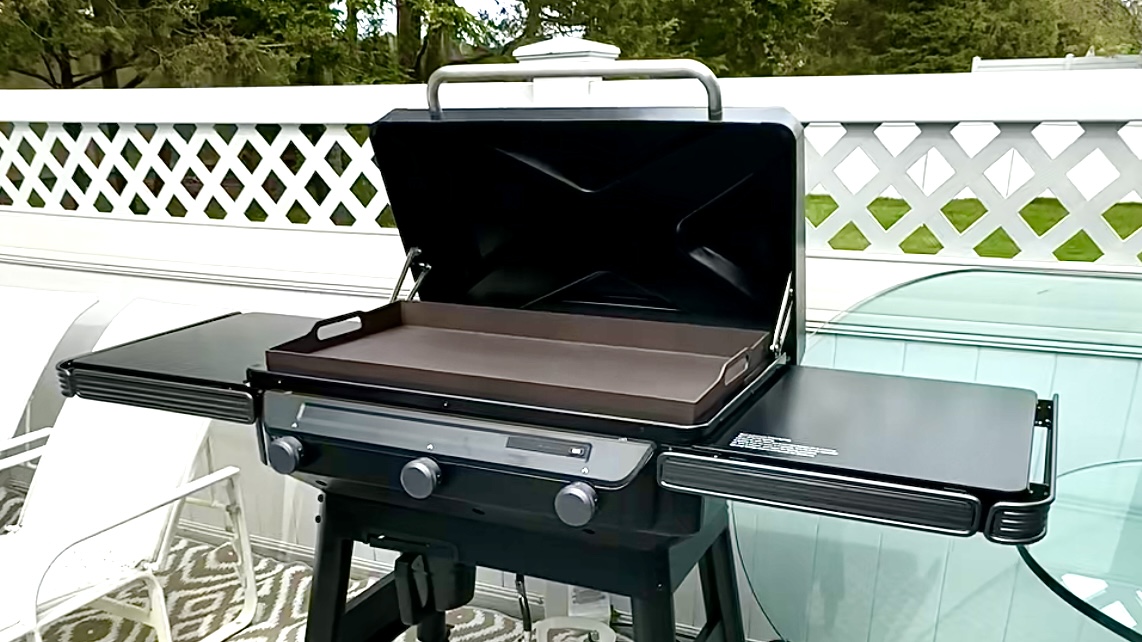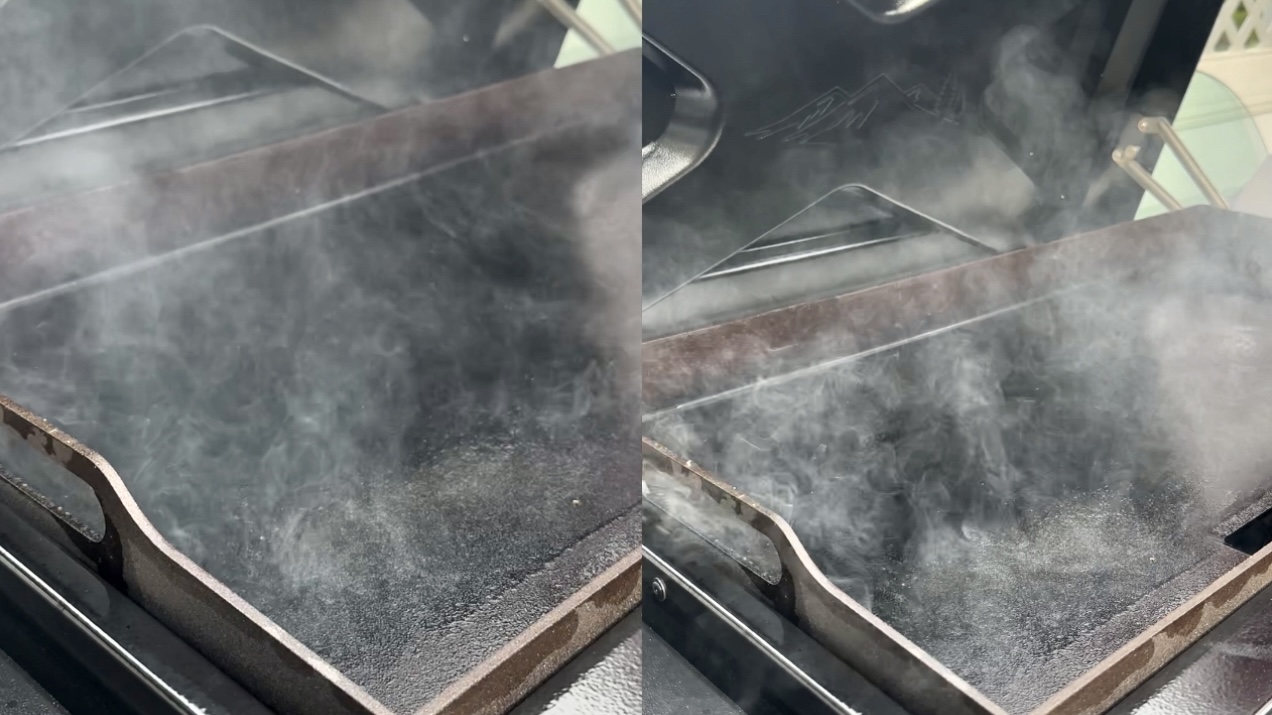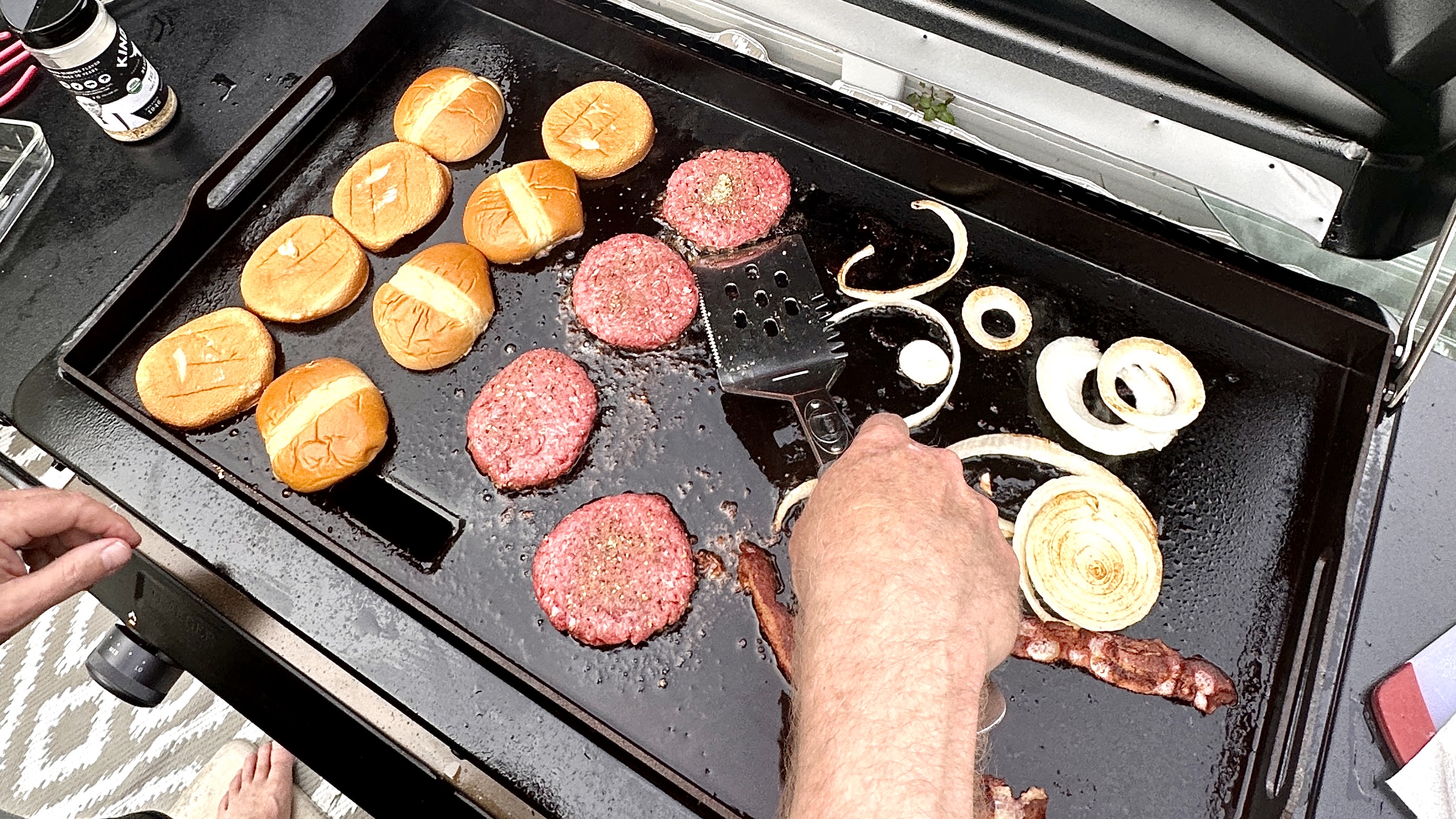
My aging Weber grill finally met its demise last summer. And when I tell you my family I got the most of that grill, we got the absolute most out of that grill. But when it came to choose a replacement for this upcoming season, we decided to gamble with the flat-top griddle trend, and try out the Traeger Flatrock instead of a traditional grill.
A flat-top griddle, popularized by the likes of Blackstone, features a metal plate with no grill bars. They come in a variety of sizes and prices, with some being small enough for a countertop and others like the Traeger Flatrock ($899 at Home Depot) taking up as much space as a regular grill.
The Flatrock’s carbon steel plate is heated by three individually-controlled U-shaped burners. Whereas the flames of our Weber suffered from some uneven heating, with only my dad knowing exactly the right spot to grill a given food item, the griddle experience promises more precise and consistent cooking.
When people think of griddles, meals like smash burgers, stir fry and pancakes might come to mind. I love all those things, but I also can’t have summer without steaks, corn on the cob and kabobs — food that we’ve only ever known how to prepare on the grill. I spent a few weeks experimenting with the griddle vs. grill, here are my biggest takeaways.
More maintenance involved

The biggest surprise about setting up the Flatrock griddle? The intensive seasoning or “break in” process. I’ve seasoned many cast iron skillets before, but the surface area on the griddle is eight times as large.
Seasoning directions might vary brand-to-brand, but Traegar recommended smoking off a neutral oil 3-4 times until the Flatrock’s metal plate turned from matte gray to shiny black. This process is essential to establishing a non-stick surface, so make sure to follow the instructions provided by the manufacturer.
By comparison, breaking in a new grill usually requires a one-time, burn-off process. From there, cleaning a grill is as easy as going over the grates with a brush between uses.
On a griddle, you have to scrape grease into a grease trap, splash some water to get the residual bits of food, and then re-oil the surface after you cook. If you wait to clean up until the next time you want to cook, the plate could rust or deteriorate more quickly than it should.
Cooking is better together
One of my favorite things about the Flatrock griddle in particular is that the 71-inch wide cooktop provided plenty of room for my dad and I to cook simultaneously. For breakfast, he handled the pancakes on one side, while I scrambled eggs on the other.
Cooking side-by-side turned dinner prep into a bonding activity that we never had with our Weber.
The Flatrock comes with collapsible prep tables on both sides, so we each had plenty of space to safely cook. Plus, we could control the temperature of our separate areas as needed. Cooking side-by-side turned dinner prep into a bonding activity that we never had with our Weber. In 20 minutes, our teamwork resulted in a full breakfast spread ready for Sunday morning.
Over an open flame, having too many cooks in the kitchen (so to speak) always seemed dangerous. I’m sure there are large enough Weber models that could replicate the experience we’ve had with the Flatrock, so that’s something we’d look for if we were to buy a regular grill again.
A griddle can (mostly) replace a grill

I quickly realized that more things can be cooked on a griddle than on a grill, since there are things you should never cook on a grill. In addition to cheesy eggs and smash burgers with caramelized onions, I had no trouble getting the perfect temperature on marinated skirt steak and a good sear on chicken wings on the Flatrock. With the help of lots of butter, I even enjoyed my griddle-cooked corn-on-the-cob.
For proteins, there is something delectable about grill marks and smokiness from the fire. A griddle can’t quite recreate those flavors. Still, only having room for one large outdoor appliance, the griddle seems to be a more versatile option.
But if you want to talk about versatility, Weber recently came out with a griddle accessory for its grills. The inserts range from $199 to $299 depending on the compatible grill model. The Weber Genesis 300 gas grill costs $999, so it’s a higher upfront cost than the Flatrock to introduce the griddle accessory, but you do get the best of both worlds.
As for dedicated griddles, the Traeger Flatrock is one that seems built to last and big enough to feed a whole family. If you’re hesitant to dive into the griddle world, there are more affordable and compact models available. But if you’re sold on getting a griddle to replace your grill, the Flatrock is among the largest and full-featured models on the market.







